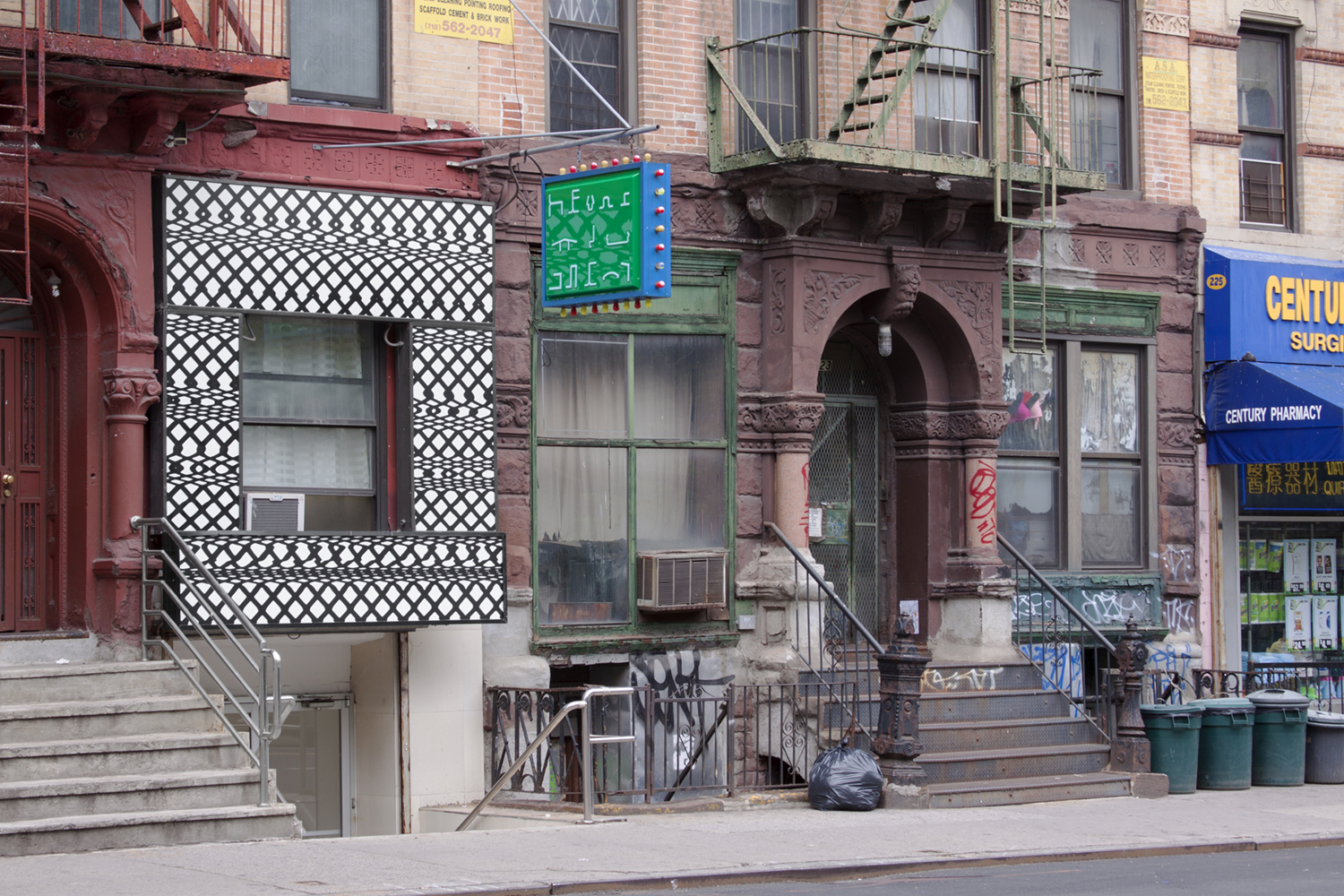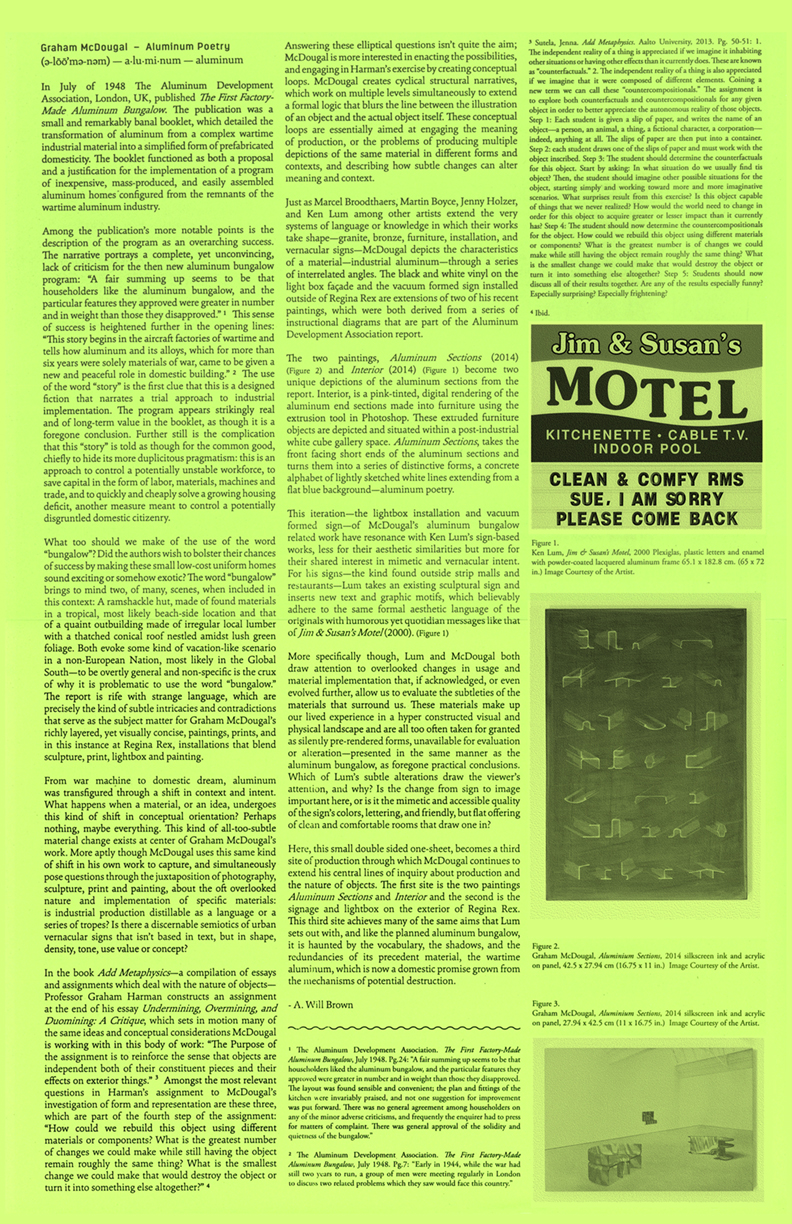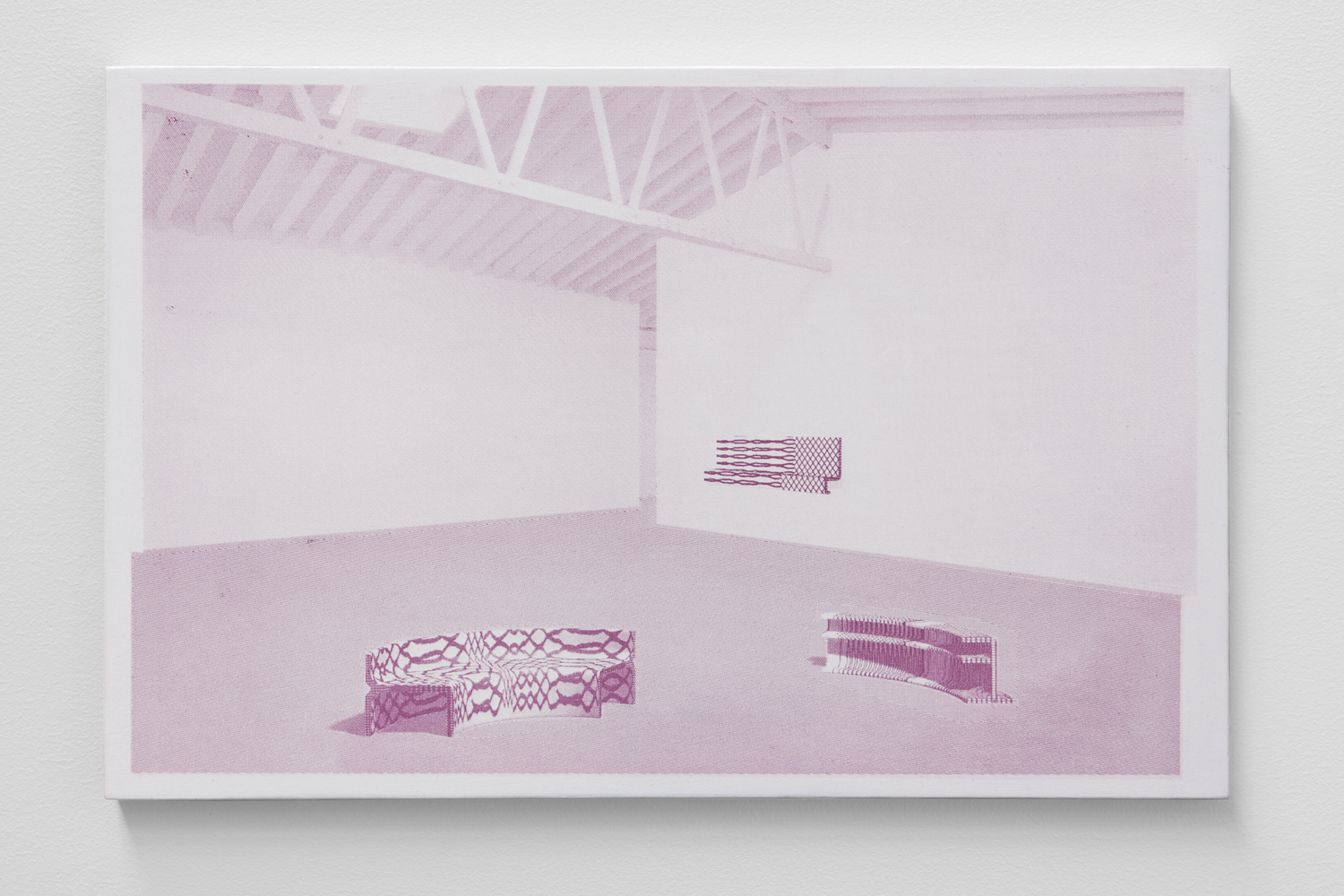Aluminium Poetry
Exhibited on the façade of Regina Rex in New York; the installation presented two works that approached the question of how painting might be adapted to a system of street signage. The result was a graphic response to the gallery’s program that made use of the building’s existing advertising lightboxes and infrastructure for signage.
Located within the Two Bridges neighborhood in Manhattan, the gallery presented a program on its façade since moving to the space in 2014. Research for Aluminum Poetry began with the question of how painting might be adapted to a system of street signage, a response to the gallery’s program and the proposed reuse of the existing signage. This prompted a reference to a publication titled The First Factory-Made Alumininum Bungalow, 1948. This report, found in a used-book store in Edinburgh, documents a historic example of reuse and transformation. It describes a framework of surplus, market value, housing shortage and experimental production. The mass production of aluminium alloys, which was initially mobilized for wartime needs such as bomber and fighter aircraft were then redeployed in the post-war period to serve the production of pre-fabricated houses.
The exterior of Aluminium Poetry consists of two related objects; an optical pattern made from cut black vinyl, which is backlit by the building’s existing advertising lightboxes; and a double-sided hand-painted, vacuum-formed street sign. The two sides of the sign display a typeset language based on an illustration of the structural I-beams published in the First…Alumininum Bungalow. Inside the gallery, a third printed work consisted of an illustrated essay written by the curator A. Will Brown. This work was printed in an open edition as an offset lithograph and was stacked up and approached as a form of exhibition ephemera. The imagery on the print depicts an interior populated by three-dimensional extrusions, sculpture or furniture. These are based on the language visible within the vacuum-formed signs. The black vinyl pattern is incorporated into the extrusions as a surface pattern or covering.
Read A. Will Brown’s text here…
Exhibited on the façade of Regina Rex in New York; the installation presented two works that approached the question of how painting might be adapted to a system of street signage. The result was a graphic response to the gallery’s program that made use of the building’s existing advertising lightboxes and infrastructure for signage.
Located within the Two Bridges neighborhood in Manhattan, the gallery presented a program on its façade since moving to the space in 2014. Research for Aluminum Poetry began with the question of how painting might be adapted to a system of street signage, a response to the gallery’s program and the proposed reuse of the existing signage. This prompted a reference to a publication titled The First Factory-Made Alumininum Bungalow, 1948. This report, found in a used-book store in Edinburgh, documents a historic example of reuse and transformation. It describes a framework of surplus, market value, housing shortage and experimental production. The mass production of aluminium alloys, which was initially mobilized for wartime needs such as bomber and fighter aircraft were then redeployed in the post-war period to serve the production of pre-fabricated houses.
The exterior of Aluminium Poetry consists of two related objects; an optical pattern made from cut black vinyl, which is backlit by the building’s existing advertising lightboxes; and a double-sided hand-painted, vacuum-formed street sign. The two sides of the sign display a typeset language based on an illustration of the structural I-beams published in the First…Alumininum Bungalow. Inside the gallery, a third printed work consisted of an illustrated essay written by the curator A. Will Brown. This work was printed in an open edition as an offset lithograph and was stacked up and approached as a form of exhibition ephemera. The imagery on the print depicts an interior populated by three-dimensional extrusions, sculpture or furniture. These are based on the language visible within the vacuum-formed signs. The black vinyl pattern is incorporated into the extrusions as a surface pattern or covering.
Read A. Will Brown’s text here…










